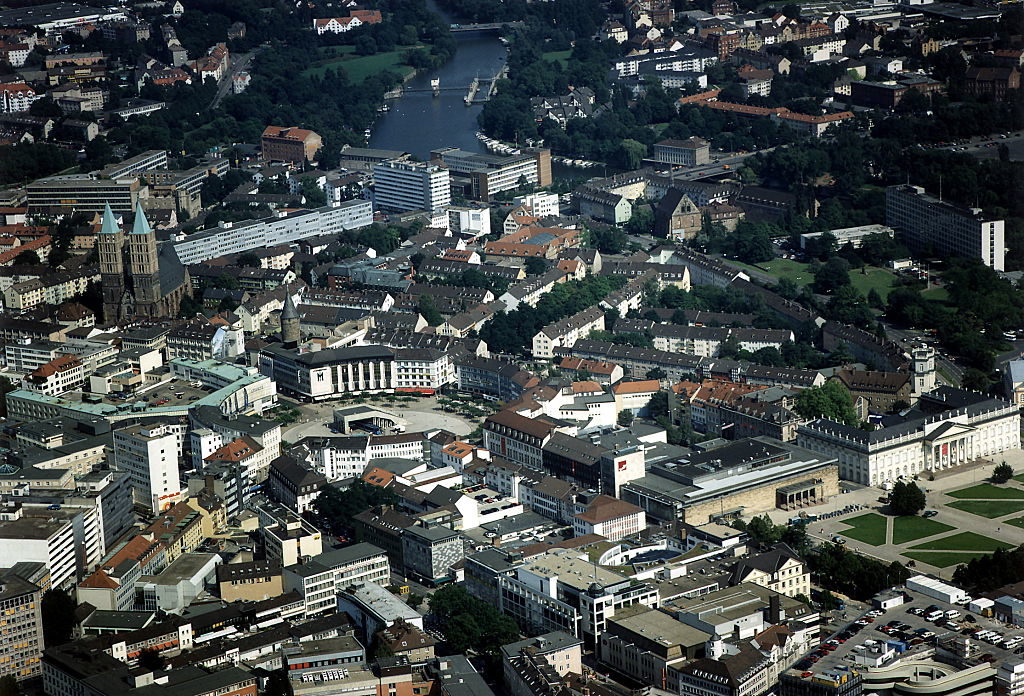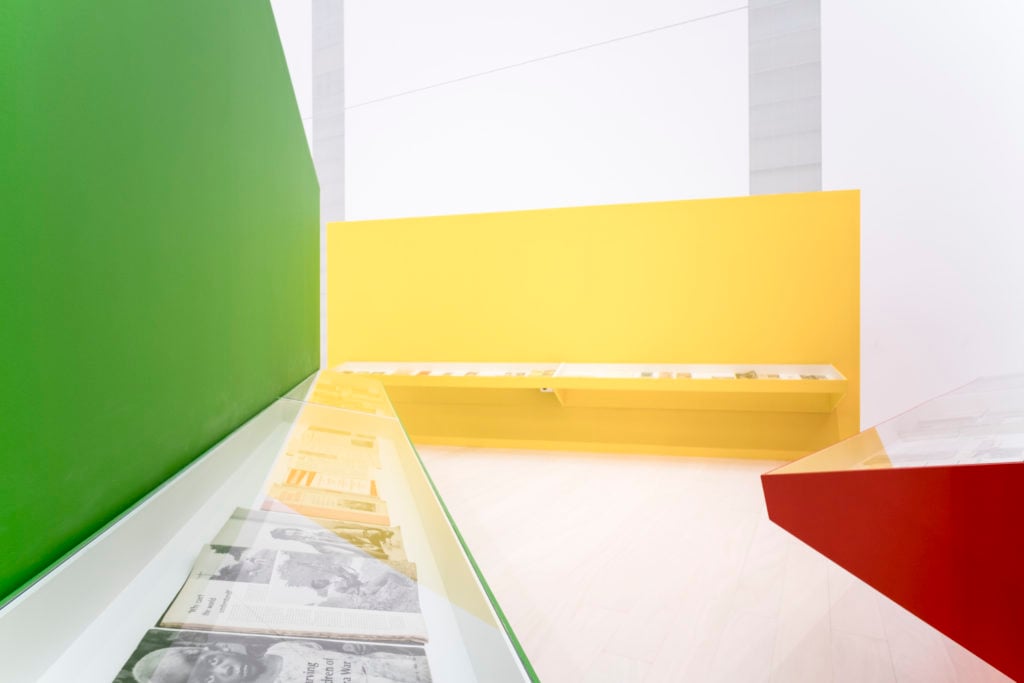Art World
documenta 14 Erects an Obelisk in Central Germany to Welcome Refugees
Nigerian-born American artist Olu Oguibe's tower is one of the few confirmed works in documenta 14's Kassel edition.

Nigerian-born American artist Olu Oguibe's tower is one of the few confirmed works in documenta 14's Kassel edition.

Hili Perlson

Three weeks ahead of the opening of documenta 14 in Kassel on June 10, the second half of Adam Szymczyk’s show remains something of a mystery. The organizers have not included a list of works in the exhibition’s catalogue due to the dual openings in two different cities, a fact which only adds to the impression of secrecy. But some projects are impossible to conceal—like a 16-meter-tall obelisk that requires cranes, scaffolding, and an enforced concrete base.
The obelisk was completed in Kassel’s central Königsplatz yesterday, and images from the construction site were released in the regional press. The monumental gray construction is the work of the Nigerian-born American artist and writer Olu Oguibe. (Though it had been previously announced that the documenta 14 in Kassel would include an obelisk, details regarding the artist and the piece itself were not released until later.)
The obelisk is inscribed with a quote from the Book of Matthew that reads: “I was a stranger and you took me in.” The sentence appears on the obelisk in German, Turkish, Arabic, and English.
Even before the scaffolding has been removed, the symbolism is powerful: Oguibe has placed a towering monument in the heart of Germany, a country that has received over one million refugees since 2015. Chancellor Angela Merkel’s policies on refugees and asylum-seekers are now being bitterly challenged as the country prepares for general elections on September 24, just one week after documenta 14 in Kassel closes.
Oguibe, who was born in East Nigeria in 1964, has also created a new piece for the Athens leg of documenta 14, opened on April 8. Inside the city’s National Museum of Contemporary Art, Oguibe presents Biafra Time Capsule (2017), which looks at the Biafran humanitarian crisis brought on by the Nigerian Civil War (1967–1970), the industry of humanitarian aid more broadly, and the mistakes made during the crisis.

Olu Oguibe’s Biafra Time Capsule (2017), documents, archival objects, and mixed media, installation view, EMST—National Museum of Contemporary Art, Athens, documenta 14. Photo: Mathias Völzke.
Many of the artists showing in Athens, all listed here, will exhibit works in Kassel as well—but then again, some may not. The curators have declined to offer a clear overview of which artists can be found where. (In Athens, the texts accompanying the works on view were scant on context, sometimes even missing the artists’ names).
In the meantime, the best indication of what to expect in Kassel can be gleaned the old-fashioned way: by walking around the city. Other works that are already installed include the Argentinian artist Marta Minujin’s Pantheon of Books, a replica of the Acropolis made of books banned in different places around the world, and the Romanian-born artist Daniel Knorr’s Expiration Movement, which releases white smoke from a tower of the Fridericianum museum and has already set off some alarm in the German city.